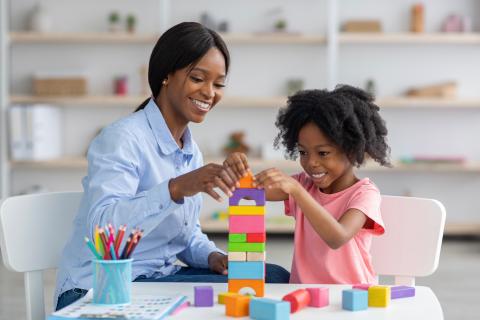OurFamilyWizard Book Club: Teaching Kids About Emotions

Teaching children how to count or write are two basic lessons we think about when we consider what children start learning at a young age. Sometimes, it's easy to overlook the fact that learning about emotions is just as crucial for a developing mind.
Many children are born with an innate ability to express certain feelings such as giggling to show happiness or crying to communicate that something is wrong. As they grow into toddlers and older children, expressing emotions becomes much more complex, as do the feelings that they experience.
For instance, a four-year-old may have begun showing a full range of emotion than when they were as young as three years old, but an eight-year-old may have a larger vocabulary and regularly express their feelings with words. Gaining that vocabulary to use words to express emotions is a large part of what you can teach your child about emotions. Just like counting and writing, being able to put words to their feelings is an important skill that your child will use their entire lives.
Younger children can learn about and understand emotions like happiness, anger, or fear. As they get older, more complex emotions like anxiety and frustration can be understood. Yet even for parents, explaining these feelings in ways that a child will understand isn't always easy. That's where teaching tools, like books, come in.
Books are a great tool to help your children understand and even visualise feelings in a way that makes sense to their developing minds. Stories paired with images that visually portray emotions can have a significant impact on a child's understanding of more complex feelings like anxiety or frustration.
Books to Help Kids Understand Emotions
One such book that makes a great teaching tool for children when learning about emotions is Today I Feel Silly: And Other Moods That Make My Day. This book follows a young girl through the different emotions that she may feel on different days. It helps children understand how one's emotions are ever changing, that it's okay not always to feel one way. This book is great for children in the early stages of elementary school.
Another great book that explains emotions to children is Glad Monster, Sad Monster. Again, this book helps elementary-aged children to gain a more robust vocabulary to pair with what they are feeling. Different expressions on the faces of friendly monsters portray emotions like silliness or anger. Pages even have eyes and nose holes cut out, so children can hold pages up to their own faces to wear the emotions themselves. It's an interactive book that can impact on a child's understanding of emotions.
Complex emotions are hard for children to cope with, especially when a big change happens that rocks their whole world. Divorce or separation can easily introduce complicated emotions into your child's life, and it's your job as a parent to help your child cope with what they're feeling in a healthy way. More than just these books focused on emotions, books that are written for children experiencing their parents' divorce can help your child to recognise understand what divorce means and realise that other families go through this process, too.
Helping your child learn how to cope with and express their emotions will likely require ongoing lessons over their course of their childhood. Sticking to it by emulating healthy ways to cope with emotions in your home as well as using teaching tools like books can support your child's education on emotional awareness, giving them the skills they need to manage their emotions in a healthy way all the way through adulthood.
We are a participant in the Amazon Services LLC Associates Program, an affiliate advertising program designed to provide a means for us to earn fees by linking to Amazon.com and affiliated sites.




